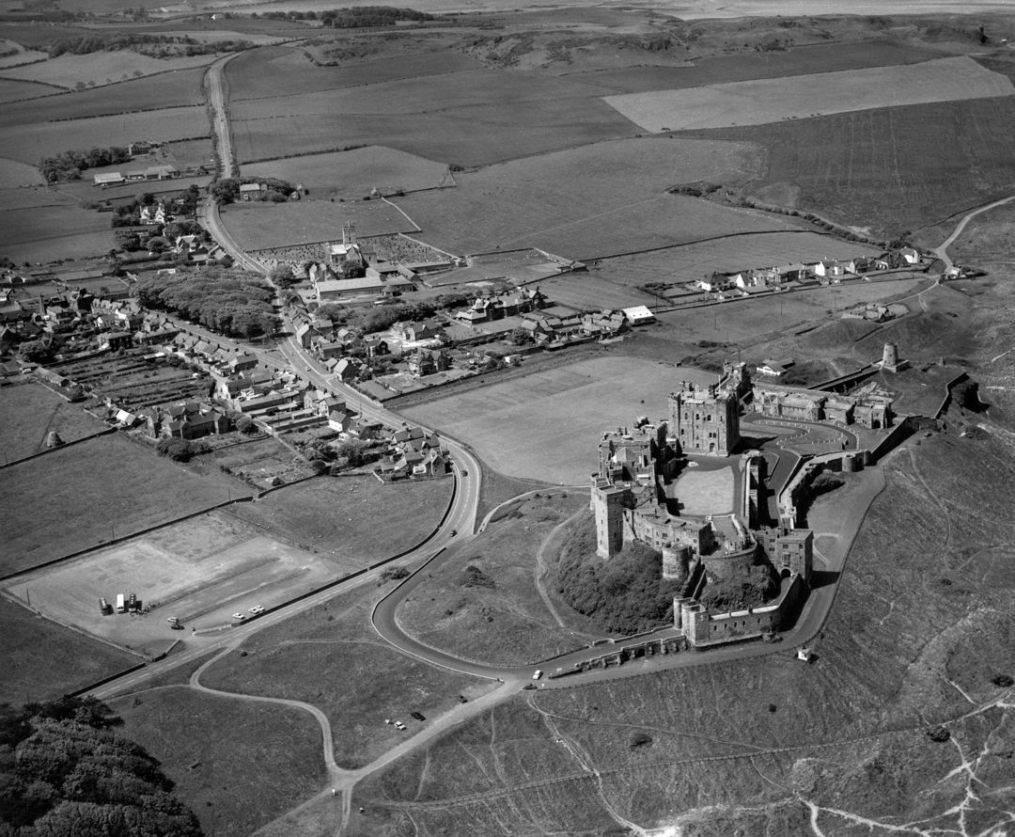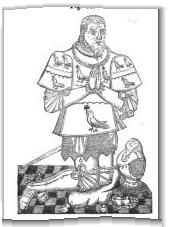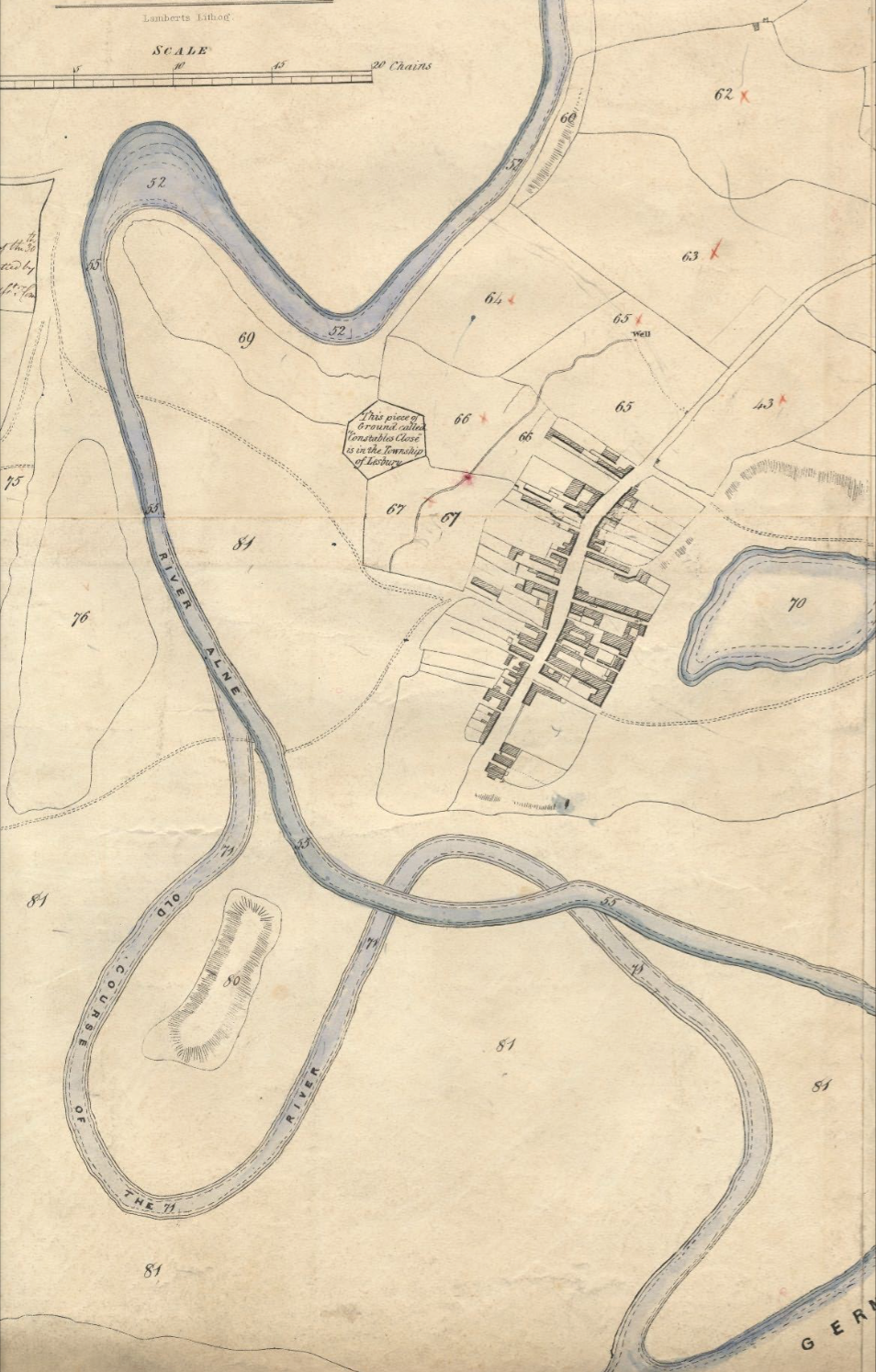|
Robert Howard Hodgkin
Robert Howard "Robin" Hodgkin (24 April 1877 – 28 June 1951) was an English historian. He taught at The Queen's College, Oxford, Queen's College, Oxford, from 1900 to 1937 and served as its Provost (education), provost from 1937 until 1946. He was particularly known for his 1935 work, ''A History of the Anglo-Saxons'', and for his 1949 book, ''Six Centuries of an Oxford College''. Born at the family house Benwell Dene in Newcastle upon Tyne, Hodgkin was the son of the banker and historian Thomas Hodgkin (historian), Thomas Hodgkin, and was part of a so-called "Quaker dynasty" with Hodgkin family, many accomplished relatives. From 1896 to 1899, he attended Balliol College, Oxford, graduating with first-class honours in the Final School of Modern History. The following year, he volunteered to serve in the Royal Northumberland Fusiliers, Northumberland Fusiliers—which he would rejoin during the World War I, First World War—ultimately leading to him being forced to leave the ... [...More Info...] [...Related Items...] OR: [Wikipedia] [Google] [Baidu] |
Benwell Dene
Benwell Dene is a Victorian building in the suburb of Benwell, Newcastle Upon Tyne, England. It was designed by Alfred Waterhouse for Dr Thomas Hodgkin and was built in 1865. Hodgkin donated the house to the Royal Victoria Home in 1894, and bequeathed the gardens and grounds to the people of Newcastle as a public park. The building subsequently became the Royal Victoria School for the Blind. After the school's closure in 1985, the structure was converted into a hotel. It is a Grade II listed building. History The Hodgkin family made their careers in finance, science, medicine and the arts. Following their Quaker faith, they were also notable philanthropists. Thomas Hodgkin (1831–1913) was the grandson of John Hodgkin (1766–1845), the family's founder. Thomas Hodgkin's profession was banking, and he founded the family finance house of Hodgkin, Barnett, Pease, Spence & Co. based in Newcastle. His primary interest was historical research and his fame largely drives from his 8 ... [...More Info...] [...Related Items...] OR: [Wikipedia] [Google] [Baidu] |
Hodgkin's Lymphoma
Hodgkin lymphoma (HL) is a type of lymphoma, in which cancer originates from a specific type of white blood cell called lymphocytes, where multinucleated Reed–Sternberg cells (RS cells) are present in the patient's lymph nodes. The condition was named after the English physician Thomas Hodgkin, who first described it in 1832. Symptoms may include fever, night sweats, and weight loss. Often, nonpainful enlarged lymph nodes occur in the neck, under the arm, or in the groin. Those affected may feel tired or be itchy. The two major types of Hodgkin lymphoma are classic Hodgkin lymphoma and nodular lymphocyte-predominant Hodgkin lymphoma. About half of cases of Hodgkin lymphoma are due to Epstein–Barr virus (EBV) and these are generally the classic form. Other risk factors include a family history of the condition and having HIV/AIDS. Diagnosis is conducted by confirming the presence of cancer and identifying RS cells in lymph node biopsies. The virus-positive cases are classified ... [...More Info...] [...Related Items...] OR: [Wikipedia] [Google] [Baidu] |
Northumbria (modern)
In modern contexts Northumbria usually refers to the region of England between the Tees and Tweed, including the historic counties of Northumberland and Durham, but may also be taken to be synonymous with North East England. The area corresponds to the rump lands of the historical Kingdom of Northumbria, which later developed into the late medieval county of Northumberland or ''Comitatus Northumbriae'', whose original southern boundary was the River Tees. A representative provincial flag of Northumbria is registered for the area. Definition Precise definitions vary but typically centre around the historic counties of Northumberland and Durham; the ceremonial counties of Northumberland, Durham and Tyne and Wear; or the North East England region. Parts of historic Yorkshire and ceremonial North Yorkshire are however included in these areas, respectfully. It is in the title of several institutions and companies: *Northumbria Police and Northumbria Police and Crime Commissioner: No ... [...More Info...] [...Related Items...] OR: [Wikipedia] [Google] [Baidu] |
Barmoor Castle
Barmoor Castle ( ) is a privately owned 19th-century country house built on an ancient site in Northumberland. It is a Grade II* listed building. As at 2008 the decaying building is officially listed on the English Heritage Buildings at Risk Register. Muschamp family After the Norman Conquest the Manor of Barmoor was granted to the Muschamp family who built a tower house on the site. A licence to crenellate the house was granted by Edward III on 17 May 1341. A 1541 survey described the house as ' in extreme decay and almost ruinous for lack of reparations'. Some repairs and improvements were carried out in 1584 but the Muschamps experienced financial difficulties, and following the death of George Muschamp in 1649 the estate was sold to William Carr of Etal to satisfy the demands of creditors. Sitwell family After 1702 the estate changed hands several times until in 1791 it was acquired by inheritance by Francis Hurt Sitwell. The Sitwells engaged architect John Paterson o ... [...More Info...] [...Related Items...] OR: [Wikipedia] [Google] [Baidu] |
Bamburgh Castle
Bamburgh Castle is a castle on the northeast coast of England, by the village of Bamburgh in Northumberland. It is a Grade I listed building. The site was originally the location of a Celtic Brittonic fort known as ''Din Guarie'' and may have been the capital of the kingdom of Bernicia from its foundation in 420 to 547. In that latter year, it was captured by King Ida of Bernicia. After passing between the Britons and the Anglo-Saxons three times, the fort came under Anglo-Saxon control in 590. The fort was destroyed by Vikings in 993, and the Normans later built a new castle on the site, which forms the core of the present one. After a revolt in 1095 supported by the castle's owner, it became the property of the English monarch. In the 17th century, financial difficulties led to the castle deteriorating, but it was restored by various owners during the 18th and 19th centuries. It was finally bought by the Victorian era industrialist William Armstrong, who completed its resto ... [...More Info...] [...Related Items...] OR: [Wikipedia] [Google] [Baidu] |
Sanatorium
A sanatorium (from Latin '' sānāre'' 'to heal, make healthy'), also sanitarium or sanitorium, are antiquated names for specialised hospitals, for the treatment of specific diseases, related ailments and convalescence. Sanatoriums are often located in a healthy climate, usually in the countryside. The idea of healing was an important reason for the historical wave of establishments of sanatoriums, especially at the end of the 19th- and early 20th centuries. One sought for instance the healing of consumptives, especially tuberculosis (before the discovery of antibiotics) or alcoholism, but also of more obscure addictions and longings, of hysteria, masturbation, fatigue and emotional exhaustion. Facility operators were often charitable associations such as the Order of St. John and the newly founded social welfare insurance companies. Sanatoriums should not be confused with the Russian sanatoriums from the time of the Soviet Union, which were a type of sanatorium resort r ... [...More Info...] [...Related Items...] OR: [Wikipedia] [Google] [Baidu] |
Repton School
Repton School is a 13–18 Mixed-sex education, co-educational, Independent school (United Kingdom), independent, Day school, day and boarding school in the English Public school (United Kingdom), public school tradition, in Repton, Derbyshire, England. John Port (died 1557), Sir John Port of Etwall, on his death in 1557, left funds to create a grammar school which was then established at the Repton Priory. For its first 400 years, the school accepted Single-sex education, only boys; girls were admitted from the 1970s, and the school was fully co-educational by the 1990s. Notable alumni, also known as "Old Reptonians", include C. B. Fry, Jeremy Clarkson, Roald Dahl, and Michael Ramsey. History The school was founded by a 1557 legacy in the will of Sir John Port (died 1557), John Port of Etwall, leaving funds for a grammar school at Etwall or Repton, conditional on the students praying daily for the souls of his family. The social mix of the early school was very broad. Amo ... [...More Info...] [...Related Items...] OR: [Wikipedia] [Google] [Baidu] |
Chollerton
Chollerton is a village in Northumberland, England, on the A6079 road about to the north of Hexham, on the River North Tyne. Nearby villages include Low Brunton and Humshaugh. The village has a fine example of a mounting block standing at the churchyard gate.''Book of the British Countryside''. London: Drive Publications, (1973). p. 302. The church, built around the 12th century from local stone quarried from nearby, is dedicated to Saint Giles, and is noteworthy for the four large Roman columns built into its south aisle. These are believed to have been brought from the Roman fort of Chesters a couple of miles downstream. Chollerton is also a registration sub-district in Northumberland; its population in 1851 was 5024 people. The etymology of the name Chollerton is uncertain; possibly it is from the Old English "Ceolferth's tun" but more likely it meant "tun by Ceolan ford or Ceolford", if so "Ceolford" meant "Ceola's ford" (i.e. modern Chollerford). Governance Chollerto ... [...More Info...] [...Related Items...] OR: [Wikipedia] [Google] [Baidu] |
Chollerton Farmhouse
Chollerton is a village in Northumberland, England, on the A6079 road about to the north of Hexham, on the River North Tyne. Nearby villages include Low Brunton and Humshaugh. The village has a fine example of a mounting block standing at the churchyard gate.''Book of the British Countryside''. London: Drive Publications, (1973). p. 302. The church, built around the 12th century from local stone quarried from nearby, is dedicated to Saint Giles, and is noteworthy for the four large Roman columns built into its south aisle. These are believed to have been brought from the Roman fort of Chesters a couple of miles downstream. Chollerton is also a registration sub-district in Northumberland; its population in 1851 was 5024 people. The etymology of the name Chollerton is uncertain; possibly it is from the Old English "Ceolferth's tun" but more likely it meant "tun by Ceolan ford or Ceolford", if so "Ceolford" meant "Ceola's ford" (i.e. modern Chollerford). Governance Cholle ... [...More Info...] [...Related Items...] OR: [Wikipedia] [Google] [Baidu] |
Bamburgh MMB 55 Bamburgh Castle
Bamburgh ( ) is a village and civil parish on the coast of Northumberland, England. It had a population of 454 in 2001, decreasing to 414 at the 2011 census. The village is notable for the nearby Bamburgh Castle, a castle which was the seat of the former Kings of Northumbria, and for its association with the Victorian era heroine Grace Darling, who is buried there. The extensive beach by the village was awarded the Blue Flag rural beach award in 2005. The Bamburgh Dunes, a Site of Special Scientific Interest, stand behind the beach. Bamburgh is popular with holidaymakers and is within the Northumberland Coast Area of Outstanding Natural Beauty. History The site now occupied by Bamburgh Castle was previously home to a fort of the Celtic Britons known as ''Din Guarie'' and may have been the capital of the kingdom of Bernicia, the realm of the Gododdin people, from the realm's foundation in c. 420 until 547, the year of the first written reference to the castle. In that year, t ... [...More Info...] [...Related Items...] OR: [Wikipedia] [Google] [Baidu] |
Scarlet Fever
Scarlet fever, also known as Scarlatina, is an infectious disease caused by ''Streptococcus pyogenes'' a Group A streptococcus (GAS). The infection is a type of Group A streptococcal infection (Group A strep). It most commonly affects children between five and 15 years of age. The signs and symptoms include a sore throat, fever, headache, swollen lymph nodes, and a characteristic rash. The face is flushed and the rash is red and blanching. It typically feels like sandpaper and the tongue may be red and bumpy. The rash occurs as a result of capillary damage by exotoxins produced by ''S.pyogenes''. On darker pigmented skin the rash may be hard to discern. Scarlet fever affects a small number of people who have strep throat or streptococcal skin infections. The bacteria are usually spread by people coughing or sneezing. It can also be spread when a person touches an object that has the bacteria on it and then touches their mouth or nose. The diagnosis is typically confirmed by ... [...More Info...] [...Related Items...] OR: [Wikipedia] [Google] [Baidu] |
Alnmouth
Alnmouth () is a coastal village in Northumberland, England, situated east-south-east of Alnwick. The population of the civil parish at the 2001 Census was 562, reducing to 445 at the 2011 Census. Located at the mouth of the River Aln, the village had a port supporting a small fishing industry and engaging in national and international trade. It was for a time a leading north-east centre for the export of grain and other foodstuffs, especially to London, and specialised in the import of timber and slate. These activities to some extent shaped the village, as granaries were constructed to store grain, and sawmills and a boatyard established to process wood and build ships. Port activities declined at the end of the 19th century, in part because of the deterioration of the port due to the shifting and silting of the river estuary, in part as trade transferred to the railways. A notable change in the course of the river during a violent storm in 1806 resulted in the loss of the rem ... [...More Info...] [...Related Items...] OR: [Wikipedia] [Google] [Baidu] |
.jpg)
_mixed_cellulary_type.jpg)





